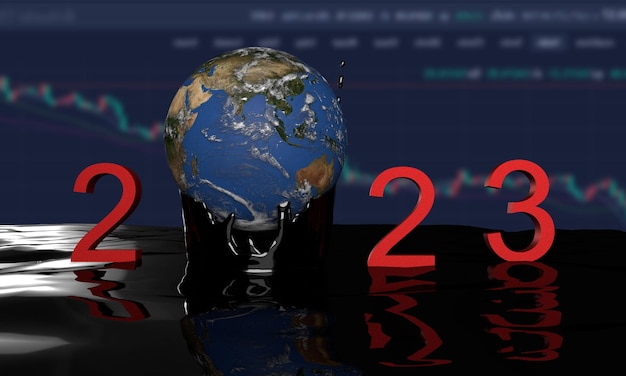
Estimated reading time: 6 minutes
Key Takeaways
- Headline CPI is projected to hover around 3 per cent by Q4 2025, keeping pressure on the Federal Reserve.
- *Core inflation* remains sticky, driven by housing and service-sector costs.
- Elevated inflation expectations are changing household and corporate behaviour.
- Real-time nowcasting models signal momentum heading into the final quarter.
- Investors should prepare portfolios for an environment of *persistent but moderate* price pressure.
Table of contents
Introduction
“Inflation is less a number than a narrative.” That narrative for late 2025 is already shaping monetary policy and investment decisions as economists anticipate price growth near the upper edge of comfort for the Federal Reserve. Against a backdrop of firm consumer demand, lingering supply‐chain snags and geopolitical tensions, gauging inflation expectations has become *mission-critical* for households, businesses and policymakers alike.
Current Inflation Overview: Setting the Stage
The latest data show CPI up 2.9 per cent year-on-year in August—its highest print since January. Broad-based price gains underscore the shift from transitory shocks to more entrenched forces.
- Food prices climbed *3.2 per cent*.
- Used-car prices rebounded after a brief lull.
- New-vehicle costs inched higher on ongoing semiconductor shortages.
- Shelter inflation remains stubbornly elevated.
Inflation Forecast Q4 2025: Expert Projections
Most forecasters—including Trading Economics—see headline CPI landing just above 3 per cent in December 2025, with *core* measures following closely.
- Persistent consumer demand and healthy household balance sheets
- Supply bottlenecks that never fully normalised post-pandemic
- Tight labour markets handing workers real wage gains
- Housing shortages that push shelter costs higher
The Cleveland Fed’s nowcast pegs Q3 CPI at 3.2 per cent and suggests upward momentum into Q4. Meanwhile, Personal Consumption Expenditures (PCE) inflation is expected to mirror CPI, reinforcing the Fed’s vigilance.
Inflation Expectations 2025: Broader Economic Sentiment
The term “stagflation-lite” is gaining traction among analysts: sub-trend growth paired with above-target inflation. The New York Fed’s Survey of Consumer Expectations places median one-year-ahead inflation at 4.3 per cent—a sign that households anticipate further price rises. Elevated expectations risk becoming self-fulfilling as firms pre-emptively lift prices and wages.
Core Inflation Q4 2025: Underlying Price Pressures
Core CPI ran at 3.1 per cent through August, revealing deep-seated pressures beyond food and energy. Key contributors include:
- Housing and rents climbing in tight markets
- Medical services facing rising labour and equipment costs
- Transport services absorbing fuel and wage hikes
- Personal care and recreation services inching higher
Such breadth points to inflation that is *woven into the economic fabric*, less responsive to quick policy fixes.
U.S. Inflation Projections: Domestic Economic Factors
Domestic forecasts blend strong demand with residual supply frictions. Tariff discussions could add a fresh layer of cost—especially for consumer electronics and machinery—potentially nudging CPI higher into 2026.
“Consumers are proving surprisingly resilient; every extra dollar they spend keeps the inflation fire smouldering.” — Market strategist
Global Inflation Forecast 2025: International Dynamics
Internationally, price pressures travel through trade channels and commodity markets.
- Volatile energy costs feeding transport and production expenses
- Weather-driven swings in agricultural output
- Factory-gate inflation in major exporters
- Currency moves that reprice imports overnight
Central banks from Frankfurt to Seoul face the same balancing act, and their rate decisions ripple across borders, influencing U.S. import prices.
Inflation Nowcasting Q4 2025: Real-Time Assessment
High-frequency nowcasting tools combine retail-price scans, labour-market releases and commodity ticks to update inflation estimates almost daily. Cleveland Fed models currently flag:
- CPI at 3.2 per cent for Q3
- Core CPI at 3.4 per cent
*Momentum matters*: a run-rate above 3 per cent heading into Q4 implies that meeting a 2 per cent target will require either slower growth or tougher policy.
Federal Reserve Inflation Outlook: Monetary Policy Implications
The Federal Open Market Committee recognises inflation’s stubbornness yet remains wary of choking off growth. Officials lean on the PCE price index—currently tracking just below CPI—when calibrating rates.
*Raise too far, risk recession; raise too little, risk entrenchment.* The policy path through Q4 2025 will likely feature cautious hikes or an extended hold, with balance-sheet runoff acting as a secondary brake.
Conclusion
Inflation expectations for late 2025 suggest a world of *persistent but manageable* price increases—enough to influence strategy but short of crisis. For investors, a tilt toward assets that benefit from moderate inflation (TIPS, commodities, quality equities) looks prudent. Policymakers, meanwhile, must walk a tightrope between credibility and flexibility. Households should revisit budgets, locking in borrowing costs where possible and favouring savings vehicles that keep pace with inflation. The story of 2025 may ultimately be one of adaptation rather than alarm.
FAQs
Why does 3 per cent inflation matter if it feels low?
Because the Fed’s target is 2 per cent, a sustained 3 per cent print implies policy must stay tighter for longer, affecting borrowing costs and asset valuations.
How reliable are nowcasting models?
They update faster than traditional forecasts but still rely on assumptions; think of them as *directional indicators* rather than exact predictions.
Could supply-chain repairs suddenly cut inflation?
Improved logistics may trim goods inflation, yet sticky services and housing costs mean overall CPI would likely stay above target without a demand slowdown.
What investment moves hedge Q4 2025 inflation?
Diversify into Treasury Inflation-Protected Securities, select commodities, and companies with strong pricing power. Shorter-duration bonds can also reduce rate-risk.
Will the Fed consider raising its 2 per cent target?
Officials repeat that a higher target is *not on the table*; shifting the goal now could erode credibility and unanchor expectations further.









